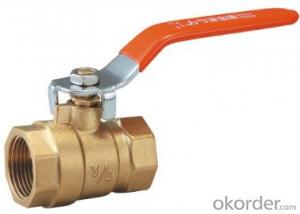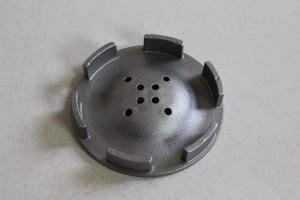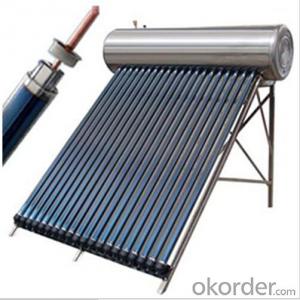Austenitic Stainless Steel
Austenitic Stainless Steel Related Searches
Best Paint For Stainless Steel Blanket Insulation For Steel Buildings Primer For Galvanized Steel Foam Filter For Stainless Steel H S Code For Stainless Steel Surface Grinding Wheels For Stainless Steel Surface Grinding Wheels For Hardened Steel Hole Saw For Stainless Steel Paint For Stainless Steel Stainless Steel For BbqHot Searches
Steel Mesh Panels For Sale Price For Stainless Steel Scrap Scrap Price For Stainless Steel Price For Stainless Steel Stainless Steel Tank For Sale Stainless Steel Sheets For Sale Cheap High Tea Sets For Sale Stainless Steel Tanks For Sale Stainless Steel For Sale High Density Fiberboard For Sale Solar Hot Water Collectors For Sale Scaffolding For Sale In Uae Scaffolding For Sale In Ireland Scaffolding For Sale In Houston Type Of Inverter For Solar Price Of Shipping Containers For Sale Types Of Inverter For Solar Stock Price For Aluminum Used Solar Inverter For Sale Steel Mesh Panels For SaleAustenitic Stainless Steel Supplier & Manufacturer from China
Okorder.com is a professional Austenitic Stainless Steel supplier & manufacturer, offers integrated one-stop services including real-time quoting and online cargo tracking. We are funded by CNBM Group, a Fortune 500 enterprise and the largest Austenitic Stainless Steel firm in China.Hot Products
FAQ
- The primary distinction between sanitary and industrial stainless steel pipes lies in their intended purposes and the level of cleanliness needed. Sanitary stainless steel pipes are specifically designed for use in industries such as food and beverage, pharmaceuticals, and other environments where cleanliness and hygiene are crucial. These pipes are manufactured with a higher degree of surface finish, typically smooth and polished, to prevent bacterial growth and ensure easy cleaning. The inner surface of sanitary pipes is often electropolished to further enhance its smoothness and resistance to corrosion. Additionally, sanitary pipes are often equipped with tri-clamp fittings or other sanitary connections to facilitate easy disassembly for cleaning purposes. On the contrary, industrial stainless steel pipes find application in a diverse range of industries, including manufacturing, oil and gas, chemical processing, and construction. These pipes are usually designed to withstand high pressures, extreme temperatures, and harsh environments. Industrial pipes may have a rougher surface finish and may not require the same level of cleanliness as sanitary pipes. They are often welded or threaded together for assembly and are built to withstand heavy-duty usage. In conclusion, the main differences between sanitary and industrial stainless steel pipes can be found in their intended purposes, surface finish, and the level of cleanliness required. Sanitary pipes prioritize hygiene and easy cleaning, making them well-suited for food and pharmaceutical applications. Industrial pipes, on the other hand, focus on durability and strength to endure demanding industrial environments.
- Mechanical properties of stainless steel tubes
- Strength (tensile strength, yield strength) the strength of stainless steel is determined by various factors, but the most important and basic factor is the addition of different chemical factors, mainly metallic elements. Different types of stainless steel have different strength characteristics due to their differences in chemical composition.
- Indeed, stainless steel pipes can indeed be recycled. As a remarkably sustainable material, stainless steel possesses the ability to be recycled endlessly without compromising its characteristics. Consequently, stainless steel pipes can be melted and reconfigured into fresh stainless steel goods, rendering them a prized asset within the recycling sector. The recycling procedure for stainless steel pipes encompasses the collection and categorization of the pipes, their subsequent melting in a furnace, and finally their transformation into novel products. The act of recycling stainless steel pipes not only safeguards our natural resources but also diminishes energy consumption and greenhouse gas emissions linked to the manufacturing of new stainless steel.
- Yes, stainless steel pipes can be used in the pharmaceutical industry. Stainless steel has excellent corrosion resistance, making it suitable for pharmaceutical applications where cleanliness and hygiene are crucial. It is also durable, easily sterilized, and can withstand high temperatures and pressures, making it an ideal choice for transporting pharmaceutical liquids and gases.
- Stainless steel pipes are an excellent choice for food storage tanks due to their high suitability. They possess remarkable corrosion resistance, making them ideal for the storage of food and beverages. Unlike other materials, stainless steel pipes guarantee the safety and quality of the stored food as they do not release any harmful substances. Moreover, their easy maintenance and cleaning contribute to maintaining proper hygiene in food storage tanks. Additionally, stainless steel pipes are durable and capable of withstanding high temperatures, ensuring the longevity and reliability of the tanks. In conclusion, stainless steel pipes are the preferred option for food storage tanks due to their sanitary properties, corrosion resistance, and durability.
- The main difference between 410 and 316 stainless steel pipes lies in their composition and properties. 410 stainless steel is a magnetic, martensitic stainless steel with relatively high strength, hardness, and wear resistance. It is often used in applications where corrosion resistance is not a primary requirement, such as in tools, cutlery, and pump shafts. On the other hand, 316 stainless steel is an austenitic stainless steel that is non-magnetic and has excellent corrosion resistance, especially in harsh environments. It contains higher amounts of chromium and nickel, providing superior resistance to corrosion, pitting, and crevice corrosion. Due to its excellent properties, 316 stainless steel pipes are commonly used in industries such as chemical processing, marine, and food processing. In summary, while both 410 and 316 stainless steel pipes have their specific applications, 316 stainless steel offers superior corrosion resistance and is more suitable for environments where corrosion is a concern.
- Yes, stainless steel pipes can be used for oil refinery applications. Stainless steel is known for its excellent corrosion resistance properties, making it suitable for handling various corrosive substances commonly found in oil refineries. Additionally, stainless steel pipes are durable and can withstand high temperatures and pressures, making them a reliable choice for oil refinery operations.
- How thick is the 3 stainless steel tube?
- Refers to the stainless steel tube with a wall thickness of 3 mm.













































